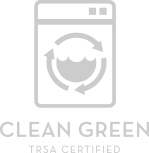“FORE!” – It’s time to set your PARs
Golfers compare their number of strokes to complete a hole with a predetermined number known as par. It is a goal to aim for par or even under par. In golf, par is set after considering certain factors such as distance, altitude, terrain and obstacles. Scoring par means you have navigated the hole successfully as a proficient golfer.
PAR in inventory management is an acronym for periodic automatic replenishment. Inventory is the stock on hand and managing this inventory is important as it ensures you have enough supply available while also minimizing overstocking and avoiding an increase in costs. Supply chain managers try to maintain PAR and avoid a bogey (+1 par) or even a birdie (-1 par). For linen supply, PAR is the sweet spot to stay in budget as well as keeping patients and staff satisfied.
Establishing PARs
The definition of PAR level in linen management is one day’s usage of a linen item plus a safety stock percentage. Determining PARs for every department takes time and cooperation. Done right, linen will be available to meet the demand without sitting on excess stock thereby decreasing your linen rental costs.
The formula for PAR when usage is unknown is:
(Normal Usage per Inpatient Day) x (Average Daily Census) x (Safety Stock Factor) x (# days usage on cart) = User Area PAR
Consider this scenario, your normal usage for a thermal blanket is one per inpatient day. A 36-bed unit with an average daily census of 28 (with a safety stock of 25%) has linen delivered daily.
1 x 28 x 1.25 x 1 = 35 thermal blankets stocked on the unit
This would be the total number of blankets stocked, meaning if you have five blankets in a warmer and two linen closets, you will stock fifteen blankets in each area to meet the unit’s PAR.
In the event of an increase in patient census, remember that you have the safety stock. In the example above, you have seven additional blankets on the unit. If the unit is at maximum capacity, linen is available in the linen room. Extra linen for extraordinary circumstances is not to be stored on each unit.
Managing PARs
There are considerations when determining normal usage of each linen item and those considerations may vary from unit to unit. EVS / supply chain and clinical leaders need to work together. You can look at each unit’s average daily census from the past year and how much linen was delivered to every linen cart to help determine linen use per patient.
Other factors to consider include decreasing:
- washcloths and towels if using bath wipes
- draw sheets if using lift devices
- heavier items such as thermal blankets
- reusable underpads if using disposables
Reviewing a linen management policy is another step to manage PAR. Look at your admission room set up, your bed changing frequency and your linen processes related to healthcare associated infection bundles.
Additionally, if there is a decrease in patient census or a unit that is closing temporarily, you can decrease your PAR for a period of time. Managing your bulk linen orders will help to keep your expenses within budget. Remember that clean linen is rented so you do not want to over order or over stock.
Communicating PARs
Once PARs are set up or modified, it is important to communicate these changes to the staff. If clinicians see an over-stocked linen cart as full, they will think they are short if the cart is filled to PAR. This may cause some to take linen off the carts and hoard in closets, lockers and cabinets on the unit. These practices will increase linen costs. Remember that having extra linen on hand increases the risk of theft, misuse and overuse.
Tips to educate staff is to explain the cost of linen usage, that PAR was set up based on unit census data and that linen is for patient-care purposes only. If a unit needs more linen, it is a phone call away. EVS managers should track these phone calls and later address them with the unit managers. Once everyone sees that patient care is not affected by stocking linen to PAR, the requests for more linen will decrease. And decreasing your overall linen costs, well, that’s your ace in the hole.
If you are looking for the right team to help prevent linen loss and decrease your linen loss costs, you found us. We have the experience, the industry-backed expertise, the technology and the professionals to help you achieve your goals. Remember to look at our Linen Awareness Program – healthcare linen management strategies that save costs and improve service.
Call us today at (888) 358-8671 or reach us here for more information on our services.
About the Author
Dyan Troxel, MSN, RN
Dyan is a registered nurse with experience in several clinical and non-clinical settings including Surgical ICU, Neonatal ICU, Education, Process Improvement, and Healthcare Leadership.





